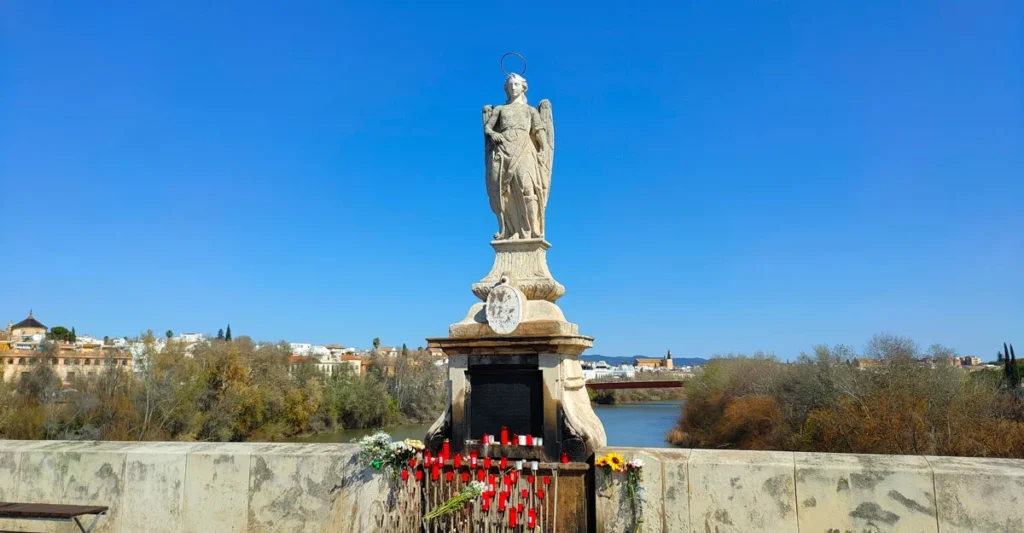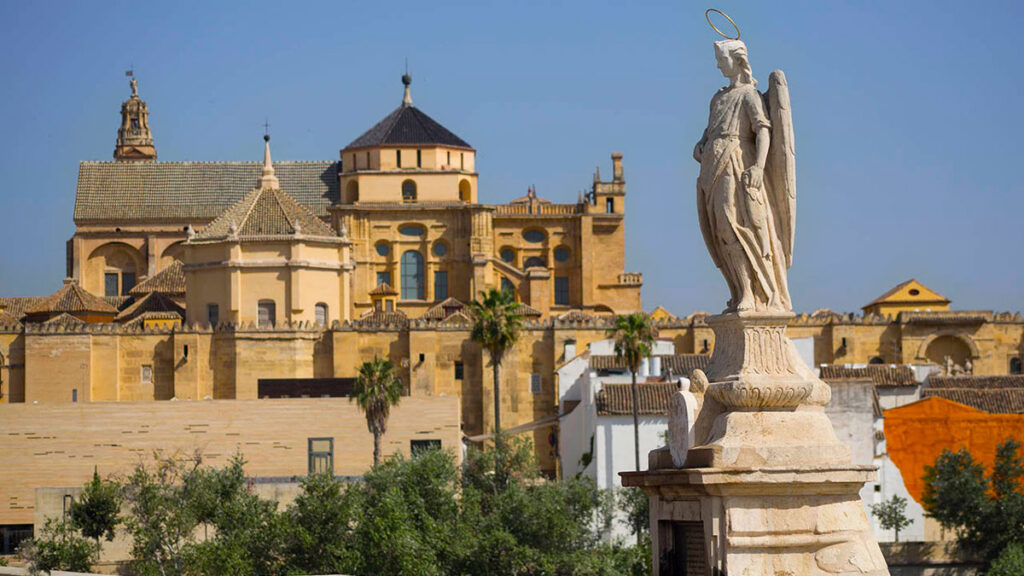
The Legend of Saint Raphael Custodian of Córdoba dates back to the 13th century, during a time when the city was under Muslim rule. In 1278, amidst a severe epidemic, the priest Simón de Sousa claimed to have had a vision of the Archangel Saint Raphael. In this vision, the archangel presented himself as the city’s Custodian, assuring that he would protect the inhabitants from all harm.
This apparition was interpreted as a sign of divine protection, especially during a time of great need. Over time, this legend became an integral part of Córdoba’s spiritual identity, with Saint Raphael being regarded as the city’s celestial defender.
Contenidos
Who is Saint Raphael
Saint Raphael is one of the three archangels mentioned in the Bible, alongside Saint Michael and Saint Gabriel. His name means “God heals,” and in Judeo-Christian traditions, he is known as the angel of healing and protection.
Saint Raphael is particularly famous for his role in the Book of Tobit, where he guides and protects the young Tobias on his journey, eventually healing his father of blindness.
In the Cordoban Legend, Saint Raphael is venerated not only as a healer but also as the guardian of the city, intervening to prevent disasters and misfortunes.
Other Guardians of Córdoba
Córdoba is a city with a rich tradition of saints and guardians. In addition to Saint Raphael, other saints have been considered protectors of the city throughout various historical periods. Saints Acisclus and Victoria, martyrs of Córdoba, are also venerated as local patrons.
However, Saint Raphael holds a special place due to the belief in his numerous miraculous interventions, particularly in times of crisis. Devotion to Saint Raphael has largely overshadowed that of other saints, establishing him as the Principal Custodian of Córdoba.

Where to Find the Statues of Saint Raphael
Córdoba is adorned with numerous statues and monuments dedicated to Saint Raphael, reflecting the deep devotion of its inhabitants. The most famous of these monuments is the Triumph of Saint Raphael, located on the Roman Bridge. This imposing statue was erected in the 18th century and has become one of the city’s most recognizable symbols.
Additionally, there are other notable statues, such as those located at Plaza del Potro, Plaza de la Corredera, and Plaza de las Tendillas. Each of these statues is not only a testament to the city’s art and history but also a reminder of the archangel’s constant protection.
How to Make a Wish
Making a wish to Saint Raphael is a practice deeply rooted in Cordoban culture. The faithful visit the archangel’s statues, particularly the Triumph on the Roman Bridge, to make their requests. It is customary to bring offerings such as flowers and candles, and often, devotees write their wishes on small pieces of paper which they leave at the statue’s feet.
This act is performed with deep faith and respect, believing that Saint Raphael will intercede with God on their behalf. This tradition has been passed down through generations, keeping alive the devotion to the city’s Custodian Saint.
